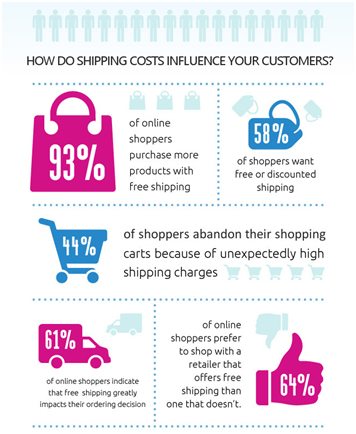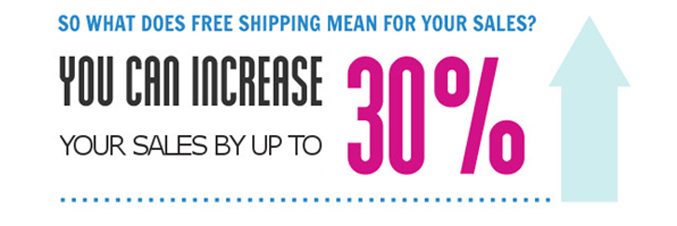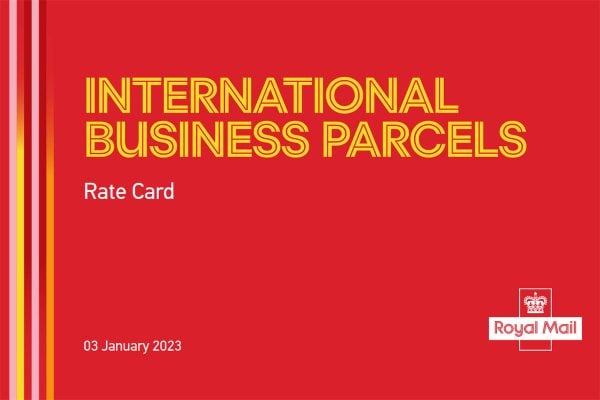 Marek Placheta is Customer Success Team Leader at Webinterpret. Marek focuses on optimisation of the accounts and increasing their cross border sales results. Today he shares Webinterprets findings on how “Free” international shipping impacts cross border sales.
Marek Placheta is Customer Success Team Leader at Webinterpret. Marek focuses on optimisation of the accounts and increasing their cross border sales results. Today he shares Webinterprets findings on how “Free” international shipping impacts cross border sales.
Beat your competitors by free shipping
Everyone knows how competitive the international e-commerce market is with multiple sellers all vying for the same customers. So any competitive edge that you can gain is definitely worth pursuing, especially where that edge comes free of charge. A free shipping option is definitely one of the things that draws a customer’s attention.
 However, there are several facts which are worth considering before offering free shipping, so that it will not result in a loss of profit margin. Before we get to them, let’s take a closer look at some statistics about free shipping that show the effectiveness of offering it.
However, there are several facts which are worth considering before offering free shipping, so that it will not result in a loss of profit margin. Before we get to them, let’s take a closer look at some statistics about free shipping that show the effectiveness of offering it.
- 61% of shoppers prefer to purchase items that offer free shipping.
- 44% abandon their shopping karts because of unexpectedly high shipping charges.
- 93% of shoppers purchase more items with free shipping.
- 64% signaled that free shipping greatly impacts their decision as to whether to order or not.
- 58% of shoppers want free or discounted shipping.
Free shipping best practices
Firstly, let’s start by explaining exactly what the ‘free shipping’ option really means. It does not mean that the seller pays the shipping fee for the customer. What it actually means is that the shipping fee is hidden in the item price, so that customers are presented with a single item price offering free shipping. This results in an offer which is psychologically more attractive to the buyer.
 If you choose to apply ‘free shipping’ to your international listings, your products will be advertised as offering free postage. Even though the total cost to the customer is unchanged, this small rearrangement in the way the price structure is presented can lead to an increase of up to 30% in your international sales.
If you choose to apply ‘free shipping’ to your international listings, your products will be advertised as offering free postage. Even though the total cost to the customer is unchanged, this small rearrangement in the way the price structure is presented can lead to an increase of up to 30% in your international sales.
Also, as an added bonus, by offering free shipping, you automatically fulfill one of eBay’s Premium seller requirements.
But before you go about adding free shipping to all your items, there are a few things to consider. Using the free shipping option is not advisable for all items; therefore it is important to know when to use it.
As a general rule, we would only recommend using the free shipping option when the cost of the shipping is less than 10 Euros.  Adding a high shipping cost of greater than 10 Euros to an item usually results in an uncompetitive total item price. This reduces the item’s visibility in search results and puts off potential buyers.
Adding a high shipping cost of greater than 10 Euros to an item usually results in an uncompetitive total item price. This reduces the item’s visibility in search results and puts off potential buyers.
However, for some high cost items, you may find that you remain competitive even after adding shipping costs of over 10 Euros. For this reason, it is always worth checking competitors’ prices before deciding whether to employ the free shipping option or not.
Items that would not benefit from applying free shipping are those which require an expensive shipping or are less expensive that their shipping cost. When the shipping cost is twice the cost of the actual item, using the free shipping option would result in a 200% increase in the item price. This would render the total item cost to the buyer uncompetitive and will put off many potential buyers.
The free shipping option may also be unsuitable for items that are usually bought in multiple quantities. The reason for this is that, normally, when a buyer buys more than one of an item, a shipping discount is applied which reduces the overall shipping cost. However, when using the free shipping option, the shipping cost is hidden in the actual item price and therefore no subsequent shipping discounts can be applied. This again could result in your item becoming less competitive.
Since you know when to use the free shipping option and how does it impact online buyers, it is time for one last question. What does free shipping give to the online retailer apart from higher customer satisfaction? Is there benefit to the seller? As you probably guessed, free shipping obviously does result in a profit to an online seller. WebInterpret research, based on our sellers’ sales strategies, proved that all those who employed free shipping in accordance with our tips and advice, increased their revenue by up to 30%!











10 Responses
I’ve read this opinion in several places and WI also encourage me to do this. But the point no one touches upon is when the buyer returns the item. We ask buyers to cover their own return costs. If the item is £10/free, they get the £10 back. We have to swallow their original postage cost. whereas if it was £7/£3. We would only refund £7.
Has anyone found a way around this yet? Or have any thoughts on it?
Why are we still using the word Free? Its Inclusive, not free, in any way for the buyer or Seller!
WebInterpret should be looking at their existing problems with incorrect translations [Left & Right in Italian, the wrong way round] & Putting listings into Incorrect Categories & causing Sellers MC999 Policy violations, which have still not been resolved 6 months after first reporting these issues to our account manager Ewa.
I was having a chat with Ebay CS re Managed Seller Returns, earlier today and just asked how I would be notified about collect+ and he told me they would be delivered to my door. (I am getting to the point)
WHilst he was waiting for someone to confirm, I asked him about cross border trade mentioning that I list on Ebay UK and let ebay decide where to stick it all.
I was expecting him to TRY to talk me into one of the free trials and listing our items on every local ebay site BUT he then stated that it was “just his personal opinion” but listing locally on other sites gets lots of problems as it is complex, not to list, but the money conversion, the translations, the different policies in different countries, the holidays scenarios plus so much more. When it’s all kept on UK or .COM or .AU it becomes a much simpler outlook. This was followed with “just his personal opinion”, but certainly backed up what I have thought.
During the last 24 hours I have sent 7 different emails to an Amazon customer wanting to return an item. They encountered some difficulties in completing the returns process and having engaged in some online chat I have established that the customer ordered the same product at the same time from one of my competitors and now wants to send the one he ordered from me back.
(Frustrating – you bet.)
But having spent the time in replying to this customers concerns I believe that I have cultivated them into a future customer and possibly a regular returning customer. It was painful at times, but why do you think that Amazon put the customer first, it’s because they are looking at the bigger picture. I might have incurred a small loss on this transaction but if they return time and again as many of my customers do then that small loss will soon be absorbed.